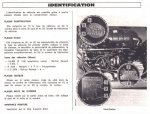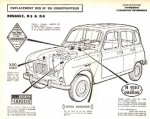I'm thinking of buying an R4 project. The car I've been looking at has been diaassembled with the body removed from the floorpan and the diamond identification plate has been removed. The owner has 'misplaced' the plate and thinks it is sitting in on of the boxes of bits.
Is the chassis number stamped on the body and/or the floorpan anywhere.
Ren
cheers!
Is the chassis number stamped on the body and/or the floorpan anywhere.
Ren
cheers!



